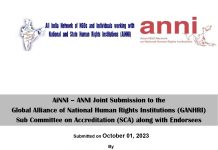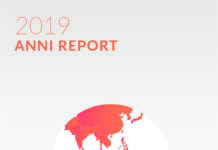BURMA: ALL THE PRESIDENT’S MEN
Burma Partnership and Equality Myanmar1
On 28 March, 2014, the Myanmar National Human Rights Commission enabling law was passed, finally institutionalising its mandate that will begin in 2015. The human rights situation in Burma certainly needs any institution possible: with continuing abuses by the Burma Army, violations related to business investment rampant, particularly land confiscation, curtailment of freedom of expression and association, and perhaps most pressing, the continuing rise of anti-Muslim rhetoric, persecution, and violence.
Since the two major bouts of violence in Arakan State, western Burma in 2012, of which the Rohingya have been overwhelmingly the victims, the situation in Arakan State, western Burma is deteriorating. With around 135,000 mostly Rohingya, living in squalid conditions in Internally Displaced Persons (IDPs) camps, the government took the deplorable decision to effectively kick out the humanitarian agency Medicines Sans Frontieres (MSF). This is related to their corroboration of facts regarding a massacre at Duu Char Yar Tan village which will be outlined later in this report, but also in the context of anti-NGO bias in the area, with many Arakanese Buddhists perceiving biased treatment from humanitarian agencies in favour of the Rohingya.
Other humanitarian agencies, including UN agencies, were forced to leave Arakan State due to wellplanned mob violence, fuelled by the perception of pro-Rohingya bias in aid distribution. While these NGOs and UN agencies are gradually making their way back to Arakan State, although not MSF, the effect of the absence of aid has hit the Rohingya population the hardest, with people starving due to lack of food, and dying due to lack of adequate medical attention that was previously provided.
The violence aimed at NGOs was closely linked to the 2014 Census, the first of its kind in Burma for over thirty years, where a campaign led by extremist monks and Arakanese nationalists to deny the option of Rohingya to identify themselves as anything other than ‘Bengali’ was successful, with the government making a last minute decision to deny the option to acknowledge the existence of Rohingya, thus painting them as illegal immigrants. This hate campaign is carried out with impunity led by the extremist monk, Wirathu, to whom President Thein Sein is close. It is not only carried out with impunity, but is hand in hand with persecution policies of the government, as documented by human rights organisation Fortify Rights in their report about official state policies of persecution against Rohingya.
President Thein Sein also supports a package of four proposed bills, one of which is the Law on Religious Conversions that places restrictions on marriage between religions. Thus, a Muslim man who wants to marry a Buddhist woman has to change religion, while the parents of a Buddhist woman also have to give permission for such a marriage. Such a law violates the rights of women to have free choice over their marital partner while further discriminating against Muslims.
Human rights abuses are ongoing related to conflict, especially in Kachin and northern Shan States. Arbitrary arrest and detention, rape and sexual assault, torture and extrajudicial killing are all systematic policies of the Burma Army, which remains a completely unreformed institution that is guaranteed impunity in the 2008 Constitution. Despite ceasefire negotiations, the Burma Army continues to launch offensives and commit abuses. In ceasefire areas, such as Karen State, land acquisition by unscrupulous businesses, often in conjunction with the Burma Army or its proxy forces, are taking advantage of the lull in fighting to grab land for quick profit while the Burma Army itself is reinforcing and strengthening its presence.
Despite the release of some political prisoners more are being arrested, especially under Article 18 of the Peaceful Assembly Law. Repressive legislation is also still on the books while the media are increasingly being muzzled.3 Instances for arrests of journalists and criminal charges based on political motivation include: five journalists sentenced to ten years in prison with hard labour from Unity Journal for reporting on a chemical weapons factory; of Democratic Voice of Burma journalist, Zaw Pe for trying to investigate corruption; Ma Khine from Eleven Media spent time in prison under trespass and defamation charges while a Mizzima journalist was charged for leading a demonstration against the increased repression of the media. This is a human rights issue that has taken a major step backwards under Thein Sein’s government.
Other trends include continuing human rights abuses related to business, particularly land confiscation. Mega projects such as Special Economic Zones (SEZs) of which foreign investors are involved such as Thilawa SEZ (Japanese involvement), Kyaukphyu SEZ (Chinese involvement) and Dawei SEZ (Thai involvement) are displacing thousands with inadequate compensation, livelihood support and little attempts for genuine consultation. Displaced villagers are often coerced into signing agreements and accepting compensation while the concept of free, prior and informed consent is systematically ignored, by domestic and international companies, or the Burmese government itself.
With huge potential investment in Burma’s manufacturing sector, especially the garment industry in industrial zones, it is vital that the rights of workers are protected yet there is a continuing pattern of harassment and intimidation of labour activists and unionists. Legislation enacted in 2012 does not adequately protect workers who make attempts to improve their dismally low ages, health and safety conditions in factories and long working hours.
Other major economic development projects that are infringing on people’s economic and social rights, particularly in ethnic areas, are large mining and hydropower projects such as the Leptadaung Copper Mine in Sagaing Region and the Tasang Dam in Shan State are displacing local communities without adequate reparation and causing significant negative environmental effects.












